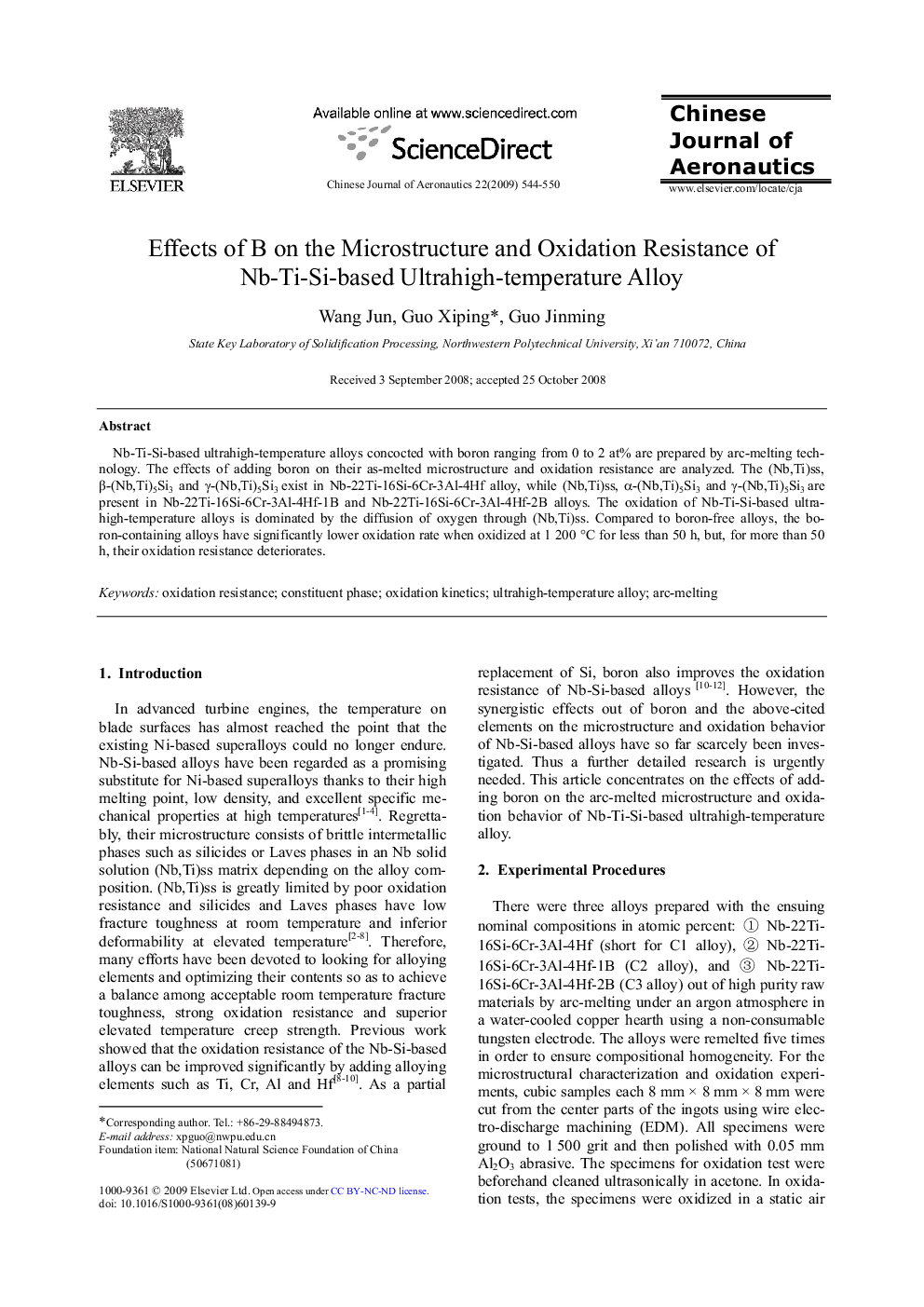| Article ID | Journal | Published Year | Pages | File Type |
|---|---|---|---|---|
| 766146 | Chinese Journal of Aeronautics | 2009 | 7 Pages |
Nb-Ti-Si-based ultrahigh-temperature alloys concocted with boron ranging from 0 to 2 at% are prepared by arc-melting technology. The effects of adding boron on their as-melted microstructure and oxidation resistance are analyzed. The (Nb,Ti)ss, β-(Nb,Ti)5Si3 and γ-(Nb,Ti)5Si3 exist in Nb-22Ti-16Si-6Cr-3Al-4Hf alloy, while (Nb,Ti)ss, α-(Nb,Ti)5Si3 and γ-(Nb,Ti)5Si3 are present in Nb-22Ti-16Si-6Cr-3Al-4Hf-1B and Nb-22Ti-16Si-6Cr-3Al-4Hf-2B alloys. The oxidation of Nb-Ti-Si-based ultrahigh-temperature alloys is dominated by the diffusion of oxygen through (Nb,Ti)ss. Compared to boron-free alloys, the boron-containing alloys have significantly lower oxidation rate when oxidized at 1 200 °C for less than 50 h, but, for more than 50 h, their oxidation resistance deteriorates.
